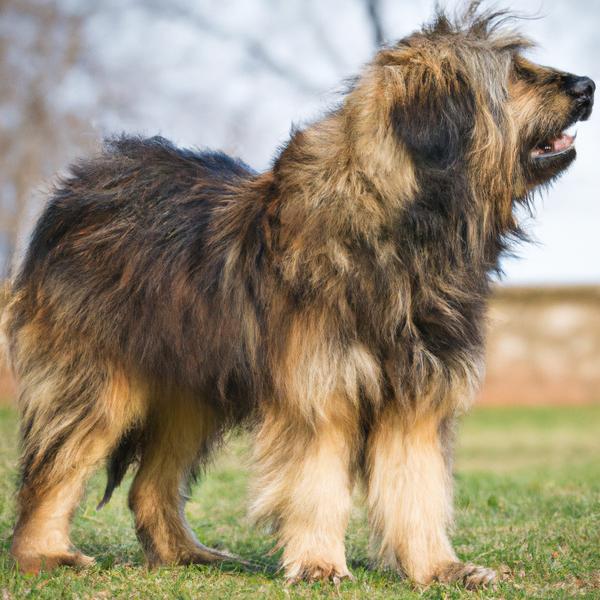Tibetan Wolfhound vs. Beardoodle: Breed Differences and Similarities
Temperament
What are the personalities of Tibetan Wolfhound and Beardoodle dogs?
Stubborn
Aloof
Dignified
Protective
Courageous
Intelligent
Patient
Loyal
Tempered
Sweet
Strong
Willed
Generous
Thoughtful
Active
Alert
Intelligent
Confident
Lively
Trainable
Assertive
Faithful
Instinctual
Shedding Level
Do Tibetan Wolfhounds shed more than Beardoodles, or which breed sheds more, Tibetan Wolfhounds or Beardoodles?
Tibetan Wolfhound or Beardoodle dogs are not heavy shedders, but they will lose a significant amount of hair each year. To decrease the amount of shedding, you can regularly brush your Tibetan Wolfhound or Beardoodle. This will remove loose hair and keep their coat growing in the same direction.
Ancestry
What are the origins of Tibetan Wolfhound and Beardoodle breeds?
Irish Wolfhound and Tibetan Mastiff
Poodle and Bearded Collie
Date of Birth
When were Tibetan Wolfhound and Beardoodle breeds first developed?
Unknown
2000s
Eye Color Possibilites
What are the eye colors of Tibetan Wolfhound and Beardoodle dogs?
Brown
Brown
Amber
Nose Color Possibilites
What are the natural nose colors of Tibetan Wolfhound and Beardoodle?
Black
Black
Brown
Coat Color Possibilites
What are the natural colors of the coat for Tibetan Wolfhound and Beardoodle breeds?
Gray
Black
Fawn
Black
Brown
Blue
Coat Length
What is the typical coat length for Tibetan Wolfhound and Beardoodle breeds?
Tibetan Wolfhounds have medium-length coats.
Beardoodles are known for their coat length.
Coat Density
What is the density of the coat of Tibetan Wolfhound and Beardoodle?
Coat Texture
What is the hair texture of Tibetan Wolfhound and Beardoodle?
Wiry
Wavy
Litter Size
What is the usual litter size for Tibetan Wolfhound and Beardoodle?
A Tibetan Wolfhound can have a litter of 5-12 puppies on average. However, it's worth noting that the size of the litters can vary greatly. Factors that can influence litter size include the health of the mother, breeding history, and genetics.
A Beardoodle can have a litter of 4-12 puppies on average. However, it's worth noting that the size of the litters can vary greatly. Factors that can influence litter size include the health of the mother, breeding history, and genetics.
Adaptability
Tibetan Wolfhounds are known for their adaptability and can adjust well to different environments and lifestyle changes.
Beardoodles are highly adaptable and versatile, making them excellent companions for families and individuals of all lifestyles.
Health Issues
Between Tibetan Wolfhound and Beardoodle, which breed is more prone to health problems?
Tibetan Wolfhounds typically have low vet costs due to their good health, but it's important to monitor their health and seek vet care when necessary.
While the Beardoodle breed is generally healthy, occasional vet check-ups are still necessary to address any health concerns.
Major Concerns
What are the major health concerns for Tibetan Wolfhound and Beardoodle breeds?
Elbow Dysplasia
Hip Dysplasia
Osteochondritis Dissecans
Progressive Retinal Atrophy (PRA)
Liver Shunts
Gastric Dilation Volvulus (GDV) or Bloat
Sebaceous Adenitis
Addison's Disease
Mitral Valve Disease
Gastric Dilation Volvulus
Minor Concerns
What minor health issues should be kept in mind when owning Tibetan Wolfhound and Beardoodle?
Ear Infections
Skin Problems
Anesthesia Sensitivity/Allergy
Entropion
Cataracts
Canine Hip Dysplasia (Chd)
Corneal Dystrophy
Occasional Tests
What occasional tests are recommended for Tibetan Wolfhound and Beardoodle breeds?
X-Rays
Skin Evaluation
Blood Analysis
Full Body Physical Examination especially of the joints
Hip X-Rays
Eye Examination
Skin Evaluation
Ultrasound
CT or MRI scan
Blood Tests
Social Needs
Tibetan Wolfhound vs Beardoodle social needs comparison
Tibetan Wolfhound has average social needs and is less independent than other breeds.
Beardoodle has very high social needs and requires regular mental and physical stimulation, a job or purpose, and companionship.
Sleeping Need
Which of the two sleeps the most/least: Tibetan Wolfhound or Beardoodle?
Tibetan Wolfhounds have moderate energy levels and typical sleep patterns of 12-14 hours per day.
Beardoodles sleep less than other breeds but still need adequate sleep for good health.
Mouthiness
Mouthiness Comparison: Tibetan Wolfhound vs Beardoodle?
Roaming urge
Tibetan Wolfhound vs Labrador: Running away tendency?
Prey Drive
Tibetan Wolfhound or Beardoodle - which breed has a higher level of prey drive?
Activity Level
Which breed has higher energy, Tibetan Wolfhounds or Beardoodles?
Tibetan Wolfhounds are low-energy dogs. This breed make a great companion for a relatively inactive person. Tibetan Wolfhound dogs require a few short daily walks, and then they're happy snuggling next to you for the rest of the day.
Beardoodles are high-energy dogs. They need mental as well as physical exercise. These dogs require a lot of your involvement and without it they can, and will, become problematic dogs.
Tolerance of being left alone
Walks per Week
How many miles should Tibetan Wolfhound or Beardoodle walk each week?
There's really no limit to how far you walk your dog as long as they're comfortable. For Tibetan Wolfhound, it's at least 7 miles / week. Just remember to build distance and stamina gradually over time.
There's really no limit to how far you walk your dog as long as they're comfortable. For Beardoodle, it's at least 15 miles / week. Just remember to build distance and stamina gradually over time.
Activity per Day
Do Tibetan Wolfhounds or Beardoodles require more exercise?
In general most Tibetan Wolfhounds usually need at least 45 minutes of exercise daily. This can be spread across the day and include all sorts of high-energy activities, like walking, running and playing.
In general most Beardoodles usually need at least 90 minutes of exercise daily. This can be spread across the day and include all sorts of high-energy activities, like walking, running and playing.
Grooming
Which breed is easier to maintain in terms of grooming, Tibetan Wolfhounds or Beardoodles?
The Tibetan Wolfhound requires an average amount of grooming compared to other breeds.
Beardoodles have high grooming needs, requiring regular trims and professional grooming assistance to keep their coat healthy.
Brushing Frequency
What is the recommended brushing frequency for Tibetan Wolfhound and Beardoodle dogs?
Tibetan Wolfhound should be brushed at least once a week. Of course you can give them more frequent brushes if you find that they are still shedding a lot
Ideally, Beardoodle should be brushed at least 2 or 3 times a week (preferably daily) improve shedding.
Brushing Tools
What brushing tools are used for Tibetan Wolfhounds and Beardoodles?
Pin Brush
Comb
Nail Clipper
Pin Brush
Dematter
Comb
Clipper
Cups
How much food should be given to Tibetan Wolfhound or Beardoodle in cups?
For an average 160-180 pound (73 - 82 kg) Tibetan Wolfhound feed 4 cups daily. But, keep in mind, the amount you feed is going to be dependent on the quality of the food you are feeding.
For an average 40-60 pound (18 - 27 kg) Beardoodle feed 2.5 cups daily. But, keep in mind, the amount you feed is going to be dependent on the quality of the food you are feeding.
Daily Cost
Which breed has a higher daily cost, Tibetan Wolfhound or Beardoodle?
The average cost of a Tibetan Wolfhound is somewhere $3.90 - $4.20 per day.
The average cost of a Beardoodle is somewhere $2.20 - $3.40 per day.
Monthly Cost
Which breed has a higher monthly cost, Tibetan Wolfhound or Beardoodle?
The average per month expenses of a Tibetan Wolfhound is between $112 - $126. This makes an average of $1344 - $1512 per year. It will be on the higher side when the dog is still small because it will need more frequent visits to the vet, shots.
The average per month expenses of a Beardoodle is between $67 - $101. This makes an average of $804 - $1212 per year. It will be on the higher side when the dog is still small because it will need more frequent visits to the vet, shots.
Sensitivity Level
How do Tibetan Wolfhound and Beardoodle compare in sensitivity?
These breeds are more sensitive than others and easily overwhelmed by new surroundings and people. Tibetan Wolfhound and Beardoodle need gentle handling and a calm, stable home environment with positive reinforcement training.
Apartment Friendly
Which breed is more apartment-friendly: Tibetan Wolfhound or Beardoodle?
Tibetan Wolfhounds can do well in apartments with enough exercise and time outside, but a small yard would be ideal.
The Beardoodle is a great apartment dog, thriving with sufficient exercise and time outside as part of their daily routine.
Child Friendly
Do Tibetan Wolfhounds or Beardoodles have a friendlier temperament towards children?
Tibetan Wolfhounds have an average level of friendliness towards children.
Beardoodles make excellent family pets for kids due to their gentle, protective nature and calm temperament.
Senior-friendly
Which dog is more suitable as a pet for the elderly - Tibetan Wolfhound or Beardoodle?
Cat Friendly
Do Tibetan Wolfhound or Beardoodle breeds have a better compatibility with cats?
Tibetan Wolfhounds are average in their friendliness toward cats and tend to do well with them, especially if raised together.
Beardoodles are good with cats, but early training is needed to prevent chasing behavior.
Dog Friendly
Which breed is more sociable with other dogs: Tibetan Wolfhound or Beardoodle?
Tibetan Wolfhounds and Beardoodles are friendly, active and loyal companions. They generally love to be around other dogs, making them a good family pet for some.
Pet friendly
How do Tibetan Wolfhound or Beardoodle dogs interact with other pets?
Stranger Friendly
Which breed is more friendly with strangers: Tibetan Wolfhound or Beardoodle?
Tibetan Wolfhounds are quick to announce strangers and can be standoffish or suspicious.
Beardoodles are friendly but may bark at strangers, and training is easy due to their intelligence.
Playfulness
Which breed is more playful between Tibetan Wolfhound and Beardoodle?
Tibetan Wolfhounds have an average level of playfulness, enjoying playtime like most dogs but not excessively so.
Beardoodles are very playful, so adopting an older one might be a better option for a more relaxed experience.
Trainability
How do the trainability levels of Tibetan Wolfhounds and Beardoodles compare?
Tibetan Wolfhounds are usually easy to train but require consistency to fully obey commands.
Beardoodles are popular for their ease of training and quick learning ability.
Compare Tibetan Wolfhound with other breeds
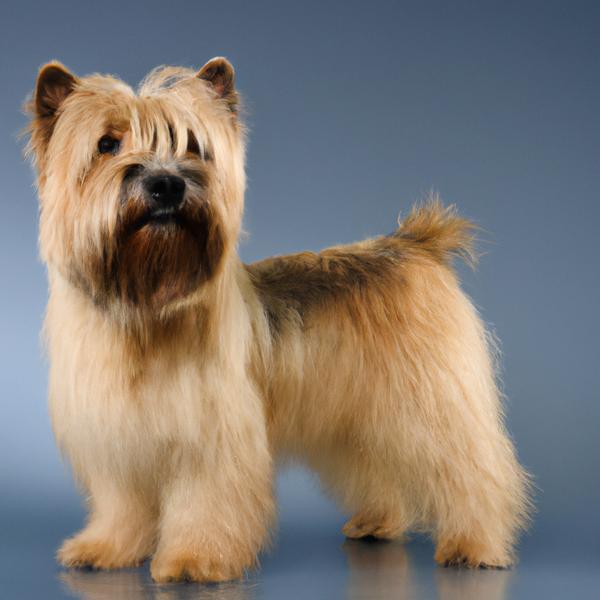
Silkland Terrier
Tibetan Wolfhound vs Silkland Terrier
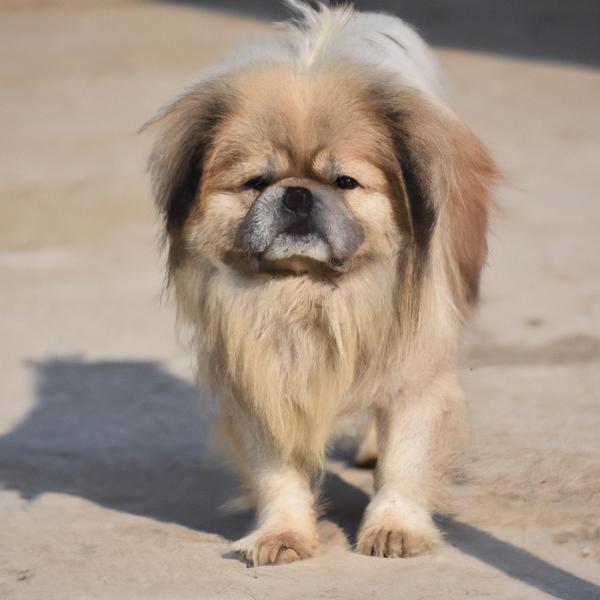
Chinaranian
Tibetan Wolfhound vs Chinaranian
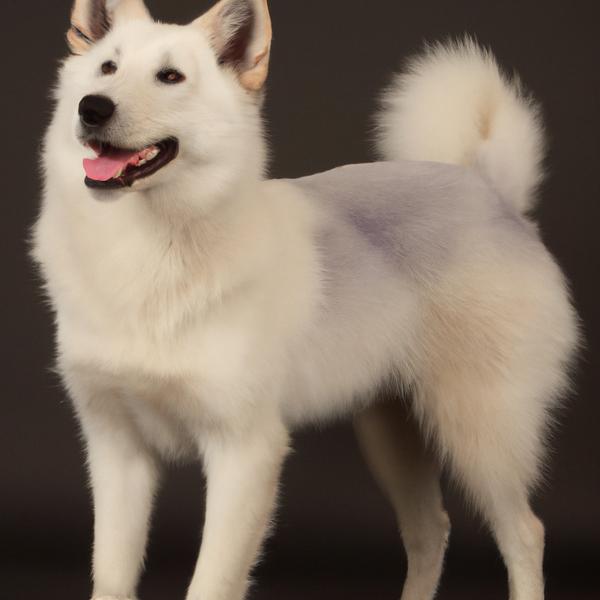
Australian Eskimo
Tibetan Wolfhound vs Australian Eskimo
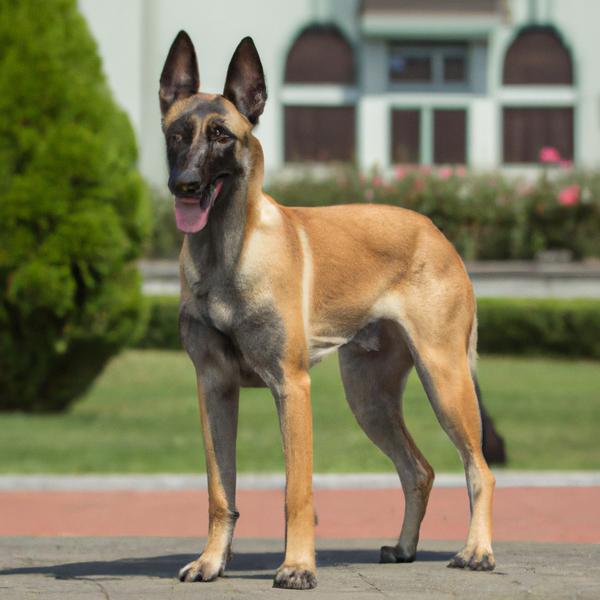
Belgian Malinois
Tibetan Wolfhound vs Belgian Malinois
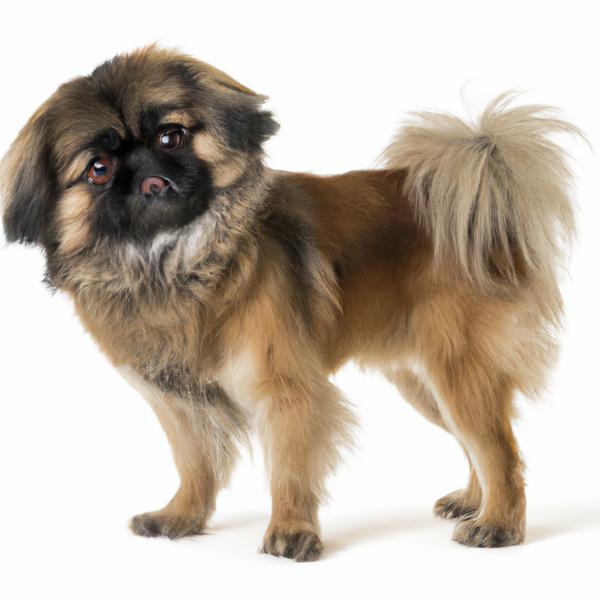
Peke-A-Boo
Tibetan Wolfhound vs Peke-A-Boo

Puggle
Tibetan Wolfhound vs Puggle

Cava-Shell
Tibetan Wolfhound vs Cava-Shell
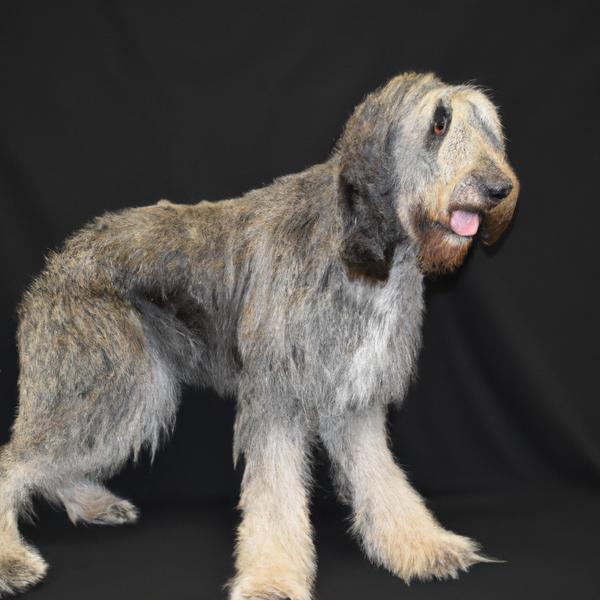
English Coonoodle
Tibetan Wolfhound vs English Coonoodle

Beardoodle
Tibetan Wolfhound vs Beardoodle
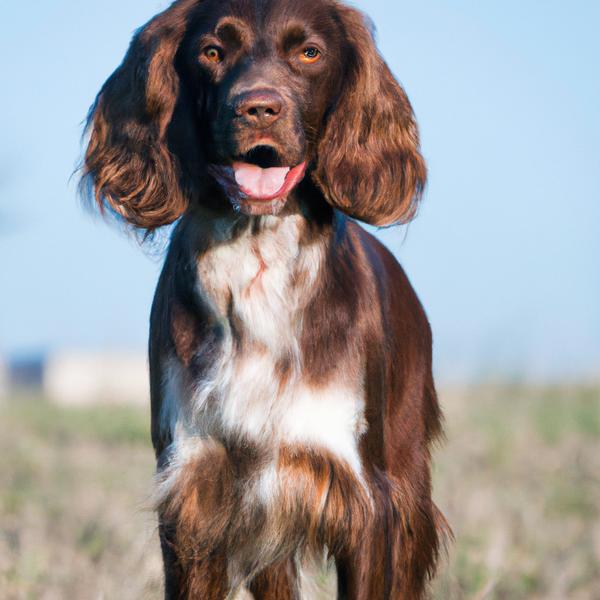
Field Spaniel
Tibetan Wolfhound vs Field Spaniel

Rhodesian Bernard
Tibetan Wolfhound vs Rhodesian Bernard

Pugalier
Tibetan Wolfhound vs Pugalier
